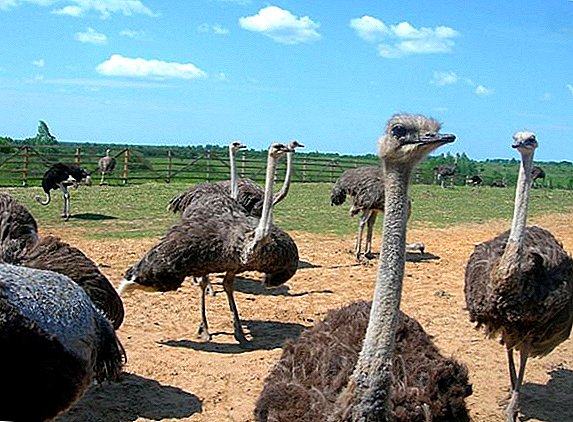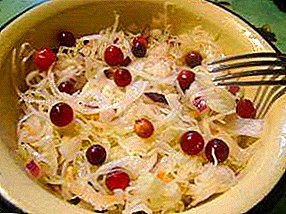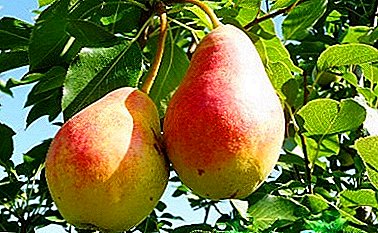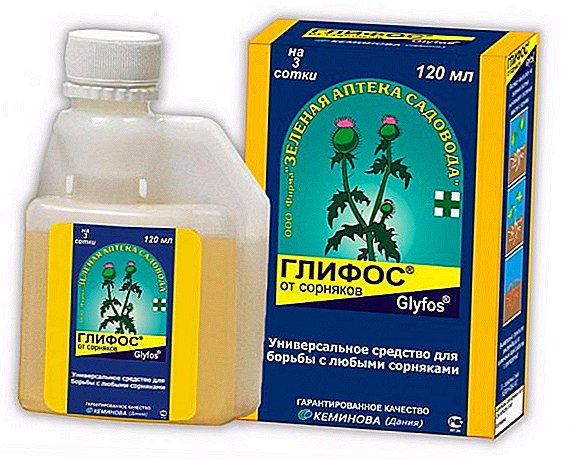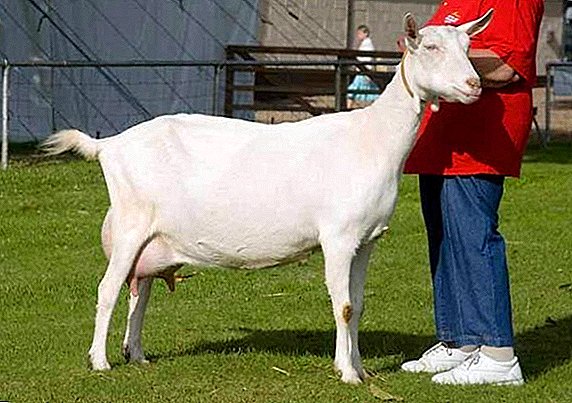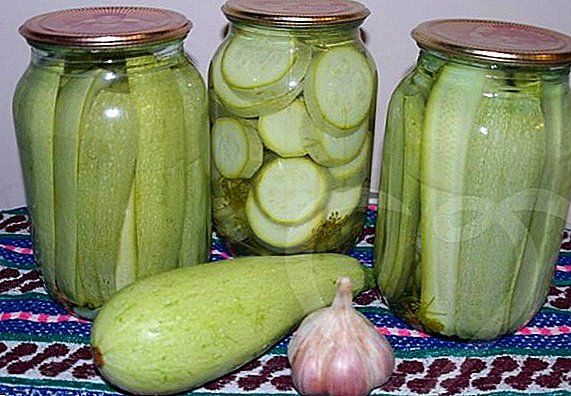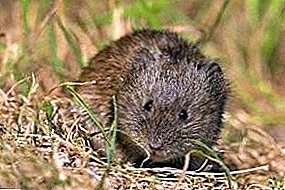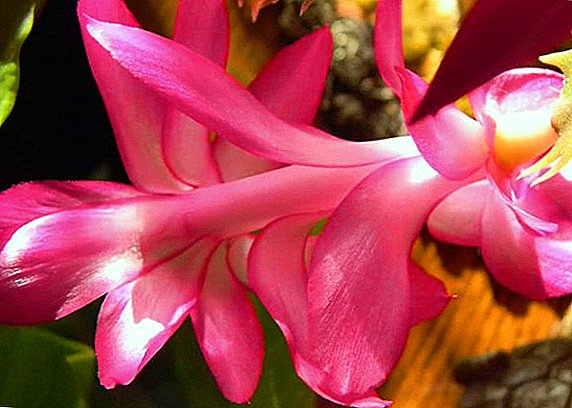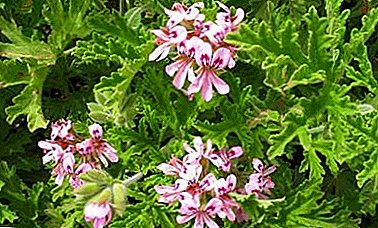
Geranium is a herbaceous perennial plant belonging to the family of Geraniahs. This culture is widely used in garden and indoor floriculture. In the process of active breeding work on obtaining hybrids of this plant, numerous varieties were obtained, among which fragrant geranium uses special millet.
Botanical description and history
Homeland of fragrant geraniums - South America. You can meet the plant in South Africa, Mozambique, Zimbabwe. He was brought to Europe in the 17th century. Geranium settled down in the UK, where the nurseries of this fragrant culture were created. In Russia, the flower appeared in the 17-19 centuries, where it was grown in greenhouses of noble people.
The worldwide distribution of fragrant geranium was due to its simplicity and adaptation to new local conditions. A fragrant plant can be grown in pots and containers. In the summer it is used to decorate terraces, paths, flowerbeds, mixborders.
What it is and the appearance characteristic
Scented geranium is a perennialwhich has the form of a branched bush with a height of 1 m. The plant has a well-developed root system. The leaf plate is bright green, and the flowers are small and have a pale pink color. Is there a geranium that does not bloom? Some varieties of fragrant geraniums are not flowering, but they look attractive due to the decorative appearance of the leaves and their pleasant aroma. After flowering, the fruit is a box in which the seeds ripen.
The unusual smell of geranium is the result of the presence of small glands, which are located on the outer and inner side of the leaf plate. They look like thin hairs. Glands contain essential oil. The fragrance spreads when you touch the leaves. Simply rub them with your hands to form a lasting aroma of rose, lemon, mint or cinnamon.
Fragrant geranium distributes in the room phytoncides, which have an antimicrobial effect and normalize sleep. The leaves of fragrant houseplants contain essential oils, flavonoids, organic acids, which are widely used in medicine, cooking and perfumery.
Popular varieties and their photos
Varieties of fragrant geraniums differ in the shape of the leaf, the scent and color of flowers. The most popular types of odorous geraniums, as well as photos of plants, will be discussed below.
Lady plymouth
This is one of the first varieties that was obtained in the UK. It has gray-green leaves, dissected and having a white edging at the edges. Flowers solitary and small, delicate lilac color. The plant has a rose fragrance..

Royal oak
The plant has carved leaves, have a green color with brown areas. Flowers pale pink with burgundy strokes. Aroma - forest freshness.

Pungent peppermint
This aromatic plant develops well in room conditions. It has carved gray-green leaves. The buds are pink and small. Spreads mint flavor.

Apple cider
This plant has an apple flavor. It has compact bushes, leaves of light green color with corrugated edges. The flowers are white or white and pink.

Robert's Lemon Rose
The peculiarity of the variety is that it produces a mixture of lemon-pink flavor. The leaves of the plant are large and green.

Where and how to plant it?
First you need to prepare the pot, focusing on the volume of the roots. The most suitable is a medium sized pot., whose diameter is 15 cm. If you take too large a capacity, then the planted plant will begin to fill the empty space with its roots, as a result of which the decorative appearance of the flower will deteriorate.
An earthen pot is excellent for fragrant pelargonium, as this material is perfectly breathable, so the air will not sour and over-humidified.
Landing is best in the spring. it is possible to use for filling of a pot both the purchased substrate, and prepared by the hands. Planted plants should be kept in a shade with a moderate temperature.
Lighting and location
Fragrant geranium is a plant that is adapted to the African sun, therefore, it must be located in the most lighted place (on the southern window-sill). Geranium normally belongs to the sunlight, but during the heat it is better to use curtains to prevent burns on the leaves. Additional lighting with lamps is required in winter.. If the light is not enough, the shoots will begin to stretch, and the leaves - to turn pale.
Soil requirements
Fragrant geranium prefers to grow in light and neutral soil. You can buy a ready-made version - Garden of Wonders "Geranium".
The soil should contain high concentrations of sand and nutrients.
For planting perennials, you can prepare your own mixture with your own hands by mixing the following components in equal proportions:
- leaf earth;
- sand;
- humus.
Before you use a homemade substrate, it must be calcined in the oven and treated with a solution of potassium permanganate.
Care
Temperature conditions
 You can grow fragrant geranium not only at home, but also on the terrace and loggia.
You can grow fragrant geranium not only at home, but also on the terrace and loggia.
It is important that there is no wind and drafts. The optimum temperature for the plant - 18-20 degrees of heat in the summer and spring.
In the autumn the temperature should not be below 10 degrees. At lower rates, the flower may die.
Watering
Moisten pelargonium regularly, but do not allow overmoistening. The next watering should be done only after the soil dries in the tank. The plant does not impose special requirements on air humidity, therefore it grows well at high and low humidity.
Top dressing
In the spring, the culture needs to be fed with phosphate fertilizers, and in the fall to make potassium compounds. During flowering must be made together with phosphorus and potassium. A positive effect on the growth of leaves and flowers iodine water. To prepare the solution, dilute 1 drop of iodine in 1 liter of water. It is not necessary to feed the plant in winter.
Diseases and pests
Scented geranium withstands disease, but they occur due to improper care: high humidity, low acidity of the soil leads to the development of fungal infections. Excessive watering is fraught with the development of stem, root and gray rot.
Methods of struggle:
- Root rot - makes soft roots, and stem - affects the petioles, with the result that they become black and weeping. Gray rot can be recognized by plaque on the leaves and peduncles. For the treatment of using such drugs:
- Fundazole;
- Fitosporin-M;
- Topaz;
- Hamair;
- Baktofit.
Black rot in cuttings is not treatable. Infected flower must be discarded and the soil sterilized.
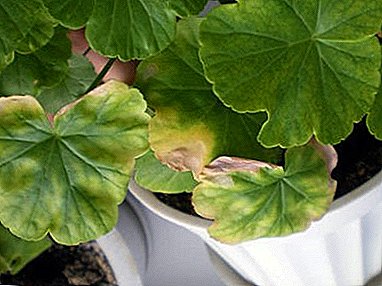 Pliers. They may appear at high temperatures. Insects live on the inner side of the leaf, make punctures there and suck the juice. As a result, the leaves become stained and curled. As soon as the parasites were discovered, it is necessary to treat the plant with soap, wait 2-3 hours and wash it off with water. For severe lesions, use chemicals:
Pliers. They may appear at high temperatures. Insects live on the inner side of the leaf, make punctures there and suck the juice. As a result, the leaves become stained and curled. As soon as the parasites were discovered, it is necessary to treat the plant with soap, wait 2-3 hours and wash it off with water. For severe lesions, use chemicals:- Karbofos;
- Karate Zeon;
- Fitoderm;
- Anti mite
- Thrips and whiteflies. Get rid of them help sticky traps. The infected plants are treated with the following insecticides:
- Aktara;
- Actellic;
- Confidor.
Breeding features
Propagated fragrant geranium can be seeds, bush division and cuttings.
Seeds
Most often, growers choose the method of propagation by cuttings, as the seed method is complex and troublesome, although it can be used to produce compact and blooming bushes. Procedure:
- Prepare the soil, which will consist of peat, sand, sod land (1: 1: 2).
- Process the soil with a solution of potassium permanganate.
- Seeds spread out on the surface and sprinkle with a layer of earth. Moisten the soil with water at room temperature.
- Cover the container with glass or polyethylene to create greenhouse conditions. The temperature in the room should not fall below 20-22 degrees Celsius.
- As soon as the first shoots are formed, covering material can be removed.
- The first leaves are formed in 1-2 months. Flowering will have to wait for next year.
Dividing bush
It is necessary to divide the mother bush in spring. To do this, remove the adult plant from the pot and divide it into several parts so that each of them has its own root and shoots. Plant in separate pots.
Cuttings
 This method is the easiest and most effective. Thanks to him, all the properties of the mother plant are preserved.
This method is the easiest and most effective. Thanks to him, all the properties of the mother plant are preserved.
Procedure:
- Choose a healthy apical stalk, on which there will be 3-4 leaves.
- Lay the cut stalk on a clean cloth for 2-3 hours to heal the wound.
- Dip in Kornevin for 10 minutes.
- Prepare the soil, which should be loose and well breathable. It is best to use a universal substrate with perlite, taken in equal proportions. After 2-3 weeks, the cutting will take root.
The fragrant geranium is an incredibly fragrant plant that actively populates balconies, window sills and even flower beds. In addition to the pleasant smell, pelargonium also looks beautiful, because even if it does not bloom, the beauty of it is added by dense and bright green leaves.


 Pliers. They may appear at high temperatures. Insects live on the inner side of the leaf, make punctures there and suck the juice. As a result, the leaves become stained and curled. As soon as the parasites were discovered, it is necessary to treat the plant with soap, wait 2-3 hours and wash it off with water. For severe lesions, use chemicals:
Pliers. They may appear at high temperatures. Insects live on the inner side of the leaf, make punctures there and suck the juice. As a result, the leaves become stained and curled. As soon as the parasites were discovered, it is necessary to treat the plant with soap, wait 2-3 hours and wash it off with water. For severe lesions, use chemicals:
